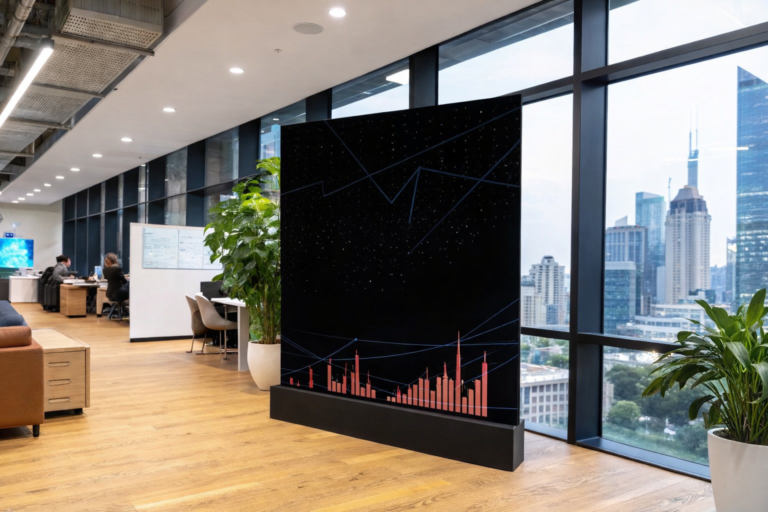Recruitment Process Outsourcing (RPO) partnerships are often evaluated in the first year or two, where cost reductions, faster time-to-fill, and improved quality-of-hire stand out as the most visible outcomes.
But what happens when the partnership matures and crosses the five-year mark?
By the fifth year, an RPO partnership evolves from solving immediate hiring challenges to driving long-term strategic impact.
Companies see sustained cost efficiencies and predictable budgeting, supported by mature talent pipelines that build workforce resilience. Employer branding and candidate experience are significantly elevated, positioning the organization as an employer of choice. Advanced analytics and AI tools enable data-driven workforce planning, while DEI outcomes improve steadily.
HR teams gain bandwidth for strategic priorities, and recruitment becomes a growth enabler rather than an operational task. In short, five years with an RPO partner delivers sustained ROI, agility, and competitive talent advantage.
In this blog, we’ll explore the 5-year ROI of RPO partnerships, what changes companies experience, how the impact compounds over time, and why long-term collaboration is the key to building future-ready talent strategies.
Sustained Cost Efficiencies and Strategic Budgeting
In the first two years with an RPO partner, companies see immediate savings through vendor consolidation and streamlined processes.
But the real magic happens by year five. Cost savings are no longer one-time wins; they become sustained and predictable, which is critical for long-term workforce planning.
- 30–50% lower hiring costs compared to pre-RPO baselines, thanks to economies of scale and smarter use of sourcing channels.
- Recruitment budgets become transparent and easier to forecast, reducing financial uncertainty.
- Savings are reinvested into strategic areas, like employee upskilling, adopting advanced HR tech, or strengthening retention initiatives.
Elevated Employer Branding and Candidate Experience
By the time an RPO partnership reaches the five-year mark, the impact goes beyond filling roles quickly: it transforms how the market perceives your company as an employer.
This is where employer branding and candidate experience become powerful competitive advantages.
- Candidate satisfaction consistently improves. Many organizations working with an RPO see their Candidate Net Promoter Score (cNPS) cross 90%, meaning candidates leave the process with a positive impression, even if they don’t get hired.
- Stronger brand recall in talent surveys. Consistent messaging, engaging candidate touchpoints, and faster processes build credibility and make the company a preferred employer.
- Offer acceptance rates rise significantly, as candidates feel more valued and connected to the brand throughout the recruitment journey.
For example, India’s leading appliance manufacturing startup which partnered with Taggd to fix its high dropout rates and slow hiring cycles, saw impactful outcomes. Here’s what changed:
- Strengthened employer brand: Taggd helped position the startup as a credible and aspirational workplace in a competitive market.
- Dedicated hiring team: A specialized RPO team ensured a seamless candidate experience at every stage.
- Process standardization: Recruitment workflows were streamlined, cutting inefficiencies.
- Candidate engagement: Personalized communication and proactive support eliminated uncertainty for applicants.
- Retention-focused hiring: Compensation benchmarking and pre-onboarding engagement reduced last-minute dropouts.
The result? The company achieved zero candidate dropout, a 47% faster time-to-fill, and higher acceptance rates, all of which strengthened its employer brand and made it a talent magnet in its industry.
In simple terms, by year five, an RPO doesn’t just help you hire better, it helps you become the company everyone wants to work for.
Mature Talent Pipelines and Workforce Resilience
Early RPO partnerships focus on fixing time-to-fill. Over five years, the conversation shifts to long-term workforce planning:
- Pre-built pipelines for niche skills, ensuring hiring agility even in volatile markets.
- Internal talent marketplaces powered by AI, boosting internal mobility by 40–50%.
- Proactive succession planning, creating leadership continuity.
In industries like IT or healthcare, where demand surges unpredictably, these pipelines act as a buffer against talent shortages.
Technology and Analytics Evolution
In the first two years of an RPO partnership, technology usually focuses on quick wins, like introducing an Applicant Tracking System (ATS), automating resume screening, or using chatbots for candidate queries. These changes reduce manual effort and speed up hiring.
But by the fifth year, technology and analytics move from being supportive tools to becoming strategic decision-making engines:
- Predictive Workforce Analytics – Instead of reacting to vacancies, companies using workforce analytics can now forecast attrition risks, identify skills that will be in short supply, and prepare ahead of time. For example, predictive models can flag that a particular department may see 20% attrition in the next quarter, allowing HR to start pipelining replacements proactively.
- AI-Driven Candidate-Job Matching – With years of hiring data, AI systems learn which profiles succeed in the company and automatically match the best-fit candidates. This doesn’t just fill roles faster, it ensures higher-quality hires at scale, reducing mis-hires and boosting retention.
- Strategic Benchmarking with Data – Five years of recruitment data builds a goldmine of insights. Companies can benchmark their hiring speed, diversity ratios, cost-per-hire, and offer acceptance rates against industry standards. These benchmarks help leaders spot gaps, optimize budgets, and guide organization-wide strategy.
For HR leaders, this shift is game-changing. Recruitment data isn’t just about how fast or cheap a role can be filled anymore: it influences organizational design, workforce planning, and upskilling priorities.
For instance, if analytics show a shortage of cybersecurity talent in the market, HR can work with business leaders to start internal training programs instead of waiting for external hires.
In simple terms, after five years with an RPO partner, technology evolves from being an operational helper to becoming a strategic advisor, enabling organizations to hire smarter, plan better, and stay future-ready.
Stronger Diversity, Equity, and Inclusion (DEI) Outcomes
Short-term RPO strategies may deliver quick improvements in diversity hiring, but it’s the sustained focus over five years that creates lasting impact.
By embedding DEI principles into every stage of the recruitment lifecycle- from sourcing to assessments and final onboarding, organizations see measurable and meaningful change.
- 25–40% growth in diverse hiring ratios across gender, regions, and underrepresented groups.
- DEI targets become part of the recruitment KPIs, not just a compliance checklist.
- The result is not only a more balanced workforce, but also stronger employee engagement and inclusive culture that supports long-term retention.
A key advantage of a long-term RPO partnership is the ability to combine talent forecasting with proactive pipeline building.
For example, Taggd replaced a global RPO for an American multinational Information Technology firm. This RPO partnership created a passive talent pool of 800+ profiles for niche technical roles, ensuring future readiness.
This proactive approach enabled the organization to achieve 32% gender diversity in lateral hiring for highly specialized positions, while maintaining overall diversity close to its ambitious 40% target.
Such results highlight how five years of consistent focus, structured processes, and just-in-time hiring models can transform DEI from a short-term initiative into a strategic advantage, shaping both organizational culture and business performance.
Business Growth and Long-Term ROI
The true test of an RPO partnership isn’t just in reducing costs or filling roles faster in the short term, it’s in how it fuels sustainable business growth over five years.
By this stage, recruitment stops being a reactive function and becomes a strategic enabler for expansion, innovation, and long-term workforce stability.
- Faster market entry – With robust candidate pipelines in place, organizations can launch new products or expand into new geographies without recruitment delays.
- Stronger workforce stability – Better-aligned, higher-quality hires lead to lower attrition and higher productivity.
- Predictable, scalable hiring – Recruitment shifts from being a bottleneck to a reliable, scalable engine that grows with business demands.
A great example comes from a leading vehicle manufacturer that partnered with Taggd to transform its hiring model. Over five years, this RPO partnership helped them rebuild the company’s recruitment function using data-driven strategies and governance-first delivery. The results were business-defining:
- Time-to-Fill reduced from 51 to 30 days, allowing faster ramp-up in critical areas like outbound logistics, IED, and vehicle control engineering.
- 6X surge in hiring managed within just 60 days, meeting peak ramp-up demands without missing a single SLA.
- 70% of roles filled through Taggd’s internal database, significantly reducing reliance on costly third-party vendors.
- 72% First-Time-Right (FTR) delivery, ensuring quality hires that fit business needs from the start.
- 15% higher diversity hiring for corporate roles, aligning workforce strategy with organizational culture goals.
The long-term impact? Recruitment became a predictable, efficient, and scalable function, enabling the manufacturer to confidently support rapid expansion and market shifts. More importantly, the partnership-built trust and agility, turning hiring into a sustainable competitive advantage rather than a constant operational challenge.
Conclusion: The Five-Year Advantage
While the first two years with an RPO deliver quick wins, the true ROI unfolds by year five.
- This is when companies see:
- Cost savings evolve into long-term financial predictability
- Talent pipelines transform into workforce resilience
- Employer branding translates into market advantage
- HR evolves into a strategic partner in business growth
In short, five years of RPO partnership turns recruitment from a support function into a sustainable competitive edge.
Ready to explore? Reach out to a trusted RPO provider like Taggd and start measuring your own change today.







